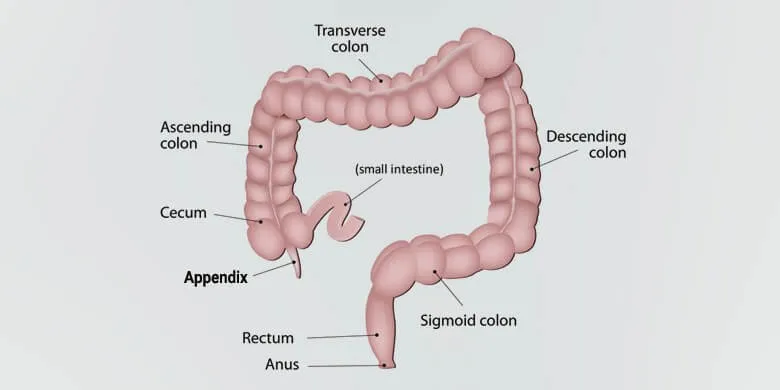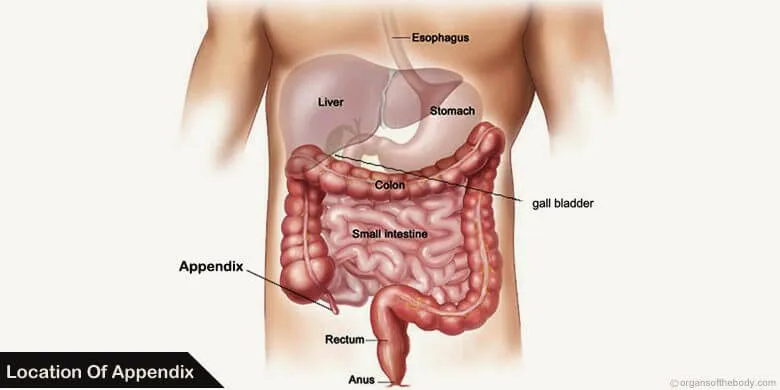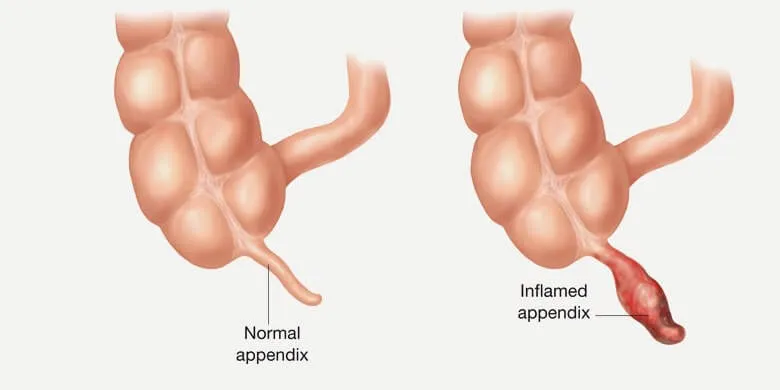What is the function of the appendix in Immune, Endocrine, Lymphatic System
Appendix Definition:
Before turning to interesting appendix facts, let’s have basic information about this vestigial organ of the body. What is appendix definition? Literally speaking, an appendix is something added on to something else as an appendage. Are you really confused? Have you seen the appendix in the books? The appendix of a book is a collection of specific pages, containing additional information, in the end of the book. In this case, the appendix is added to the regular pages.
According to biological appendix definition, it is a finger like growth at the junction between small and large intestine. It has a blind end which means anything entering into it cannot come back. This organ is of no particular use to humans. However, appendix is still functional in the grazing animals.

Appendix Location – What Side Is Your Appendix On?
It is located at the junction where small and large intestines join each other, i.e. in the right lower abdominal quadrant. Find it somewhere between the top section of the pelvic bone and the navel area. Normally, we cannot determine the exact location of the appendix and even in the scanned image.
However, it is not clearly visible. You can locate this body organ in the specified abdominal chamber, when the visceral organs in human body are at their normal positions. Physicians refer to such a condition as situs solitus. There is a congenital condition (i.e. situs oppositus) in which there is delocalization or reversing of the internal organs. So, in the rare cases of situs inversus, this vestigial organ appears on the opposite side of the body.
In human body, the vestigial structure of appendix develops a collection with the cecum of colon. Do you know what side is your appendix on? You can find this tube-shaped pouch in lower right side of your abdomen. It is very small in size and looks like a worm. That is why, you may also call it "Vermiform Appendix" or simply "Vermix" which comes from Latin meaning "worm-shaped".

Resembling a small, hollow, finger-like tube, vermix is blind at one end while the other end opens into cecum of large bowel (or colon). On average, the length is about 11 centimeters, but it varies greatly from person to person, and can enlarge up to 20 cm.
As the free end has no opening, anything entering into it will remain there with no way to come out of it. The stagnation of food will cause inflammation of the organ along with severe pain. Physicians can relieve the symptoms only with its immediate surgical removal, or else the victim may die.
Functions of appendix
The contribution of appendix is not so important in the breakdown or absorption of dietary particles. But medical researchers, such as Loren G. Mortin, have found vermix as playing significant role both in fetuses and adult humans. In the fetuses of eleven week old, endocrine cells, present there, assist in biological control mechanisms (such as, homeostasis).
In adults, on the other hand, it mainly acts as a lymphatic organ. Most recently, a number of experiments have verified that it helps the immune system. Particularly, it helps to fight against microbes and other disease causing agents by killing or neutralizing them.
Moreover, it has also been found to act as an organ of transplant for the construction of a functional bladder. Meanwhile, it can also help in rebuilding a sphincter muscle into the urinary tract.
Interesting Appendix Facts:
Here are some of the really interesting appendix facts. Certain herbivores have a number of such structures. They are attached to their intestinal canal. Such structures assist in the process of digestion in much like the same way as they once did in the herbivore humans. In Koala Bear, a mammal that eats the leaves of eucalyptus, appendix is still in functional state and helps in breaking down the chemicals of the vegetation that they consume. Just read on to find more appendix facts.
In the digestive system of these animals, a large number of bacteria are there to help the digestive processes of complex plant materials. Among many types of bacteria, some are harmful and cause many infectious diseases. While the others are friendly and create many useful compounds in the body.
If they lose these good bacteria which help in the digestive process, they may have to face many health issues. So in order to house such bacteria in the digestive system digestive system, appendix is used.
Appendix was in need
It is one of important appendix facts that, thousands of years ago, humans in the hunter-gatherer times were eating a wide variety of vegetation. So the appendix was useful for breaking down the specific chemicals of the leaves and complex plant materials. Here is another of the appendix facts, i.e. its function became greatly limited as pre-human animals evolved to become omnivores.
Gradually, they replaced raw vegetables with meat, fruits and other food items. With the passage of time, the functions of the appendix in food digestion have almost decreased to none, i.e. appendix has no particular use for the human digestive system. Isn’t it one of the amazing appendix facts?
But it plays significant role in the immune, lymphatic and endocrine systems. However, if you remove it surgically from your body, there will be no substantial adverse effects on the functioning of digestion or other mechanisms.
Appendicitis and Appendix Causes:
A well-known disease of appendix is appendicitis. Do you know the appendix causes? In this case, some food particles, passing through gastrointestinal canal, get an accidental entry into this hollow structure with blind end. But there is no way for the food to come out of it.
Thus, the stagnation of organic material produces pus and toxic substances. Consequently, it leads to severe inflammation. If you do not address the condition timely, the swollen tube bursts open. It releases its harmful contents to the sensitive internal organs, and may even cause the death of the victim.

Symptoms
After discovering appendix cause, you need to learn its symptoms. At an early stage it may start like an ordinary stomach pain. But later on you may also suffer from fever and vomiting. Your stomach will hurt when you touch it and it will become sore, swollen and tender. If this happens, you have to go to a doctor immediately. Any negligence may prove to be very drastic and claim your life.
Treatment
Sometimes, you use medication as a treatment for appendix, but in many cases, immediate surgical removal becomes quite inevitable. Appendectomy is the act of the surgical removal of appendix. If you do not carry out surgery at a right time, then the infected appendix will burst. And, it will spread the infections in the abdominal chamber.
So the surgeons need to remove the infected appendix as soon as possible. The surgery is very simple and within a few days, the patient can walk. The appendix does not give any benefits to the humans and it is obvious from the fact that people who have removed their appendix are healthy.
So, you need not worry about the loosing this part of your body. Also if doctors remove it earlier (for example, at the time of birth), it can save you from unbearable future complexities. However, the most recent research in the field doesn’t suggest its early removal. It is because it can serve as a spare transplant organ at the time of need.


